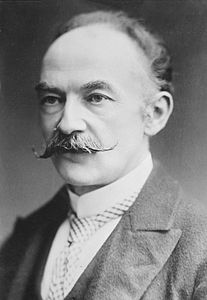Analysis of Song From Heine
Thomas Hardy 1840 (Stinsford) – 1928 (Dorchester, Dorset)
I scanned her picture dreaming,
Till each dear line and hue
Was imaged, to my seeming,
As if it lived anew.
Her lips began to borrow
Their former wondrous smile;
Her fair eyes, faint with sorrow,
Grew sparkling as erstwhile.
Such tears as often ran not
Ran then, my love, for thee;
And O, believe I cannot
That thou are lost to me!
| Scheme | ABAB CDCD EFEF |
|---|---|
| Poetic Form | Traditional rhyme Quatrain |
| Metre | 1101010 111101 111110 111101 010111 110101 0111110 11011 1111011 111111 0101110 111111 |
| Closest metre | Iambic trimeter |
| Characters | 357 |
| Words | 65 |
| Sentences | 4 |
| Stanzas | 3 |
| Stanza Lengths | 4, 4, 4 |
| Lines Amount | 12 |
| Letters per line (avg) | 21 |
| Words per line (avg) | 5 |
| Letters per stanza (avg) | 85 |
| Words per stanza (avg) | 21 |
Font size:
Submitted on May 13, 2011
Modified on March 05, 2023
- 19 sec read
- 417 Views
Citation
Use the citation below to add this poem analysis to your bibliography:
Style:MLAChicagoAPA
"Song From Heine" Poetry.com. STANDS4 LLC, 2024. Web. 28 Apr. 2024. <https://www.poetry.com/poem-analysis/36474/song-from-heine>.


Discuss this Thomas Hardy poem analysis with the community:
Report Comment
We're doing our best to make sure our content is useful, accurate and safe.
If by any chance you spot an inappropriate comment while navigating through our website please use this form to let us know, and we'll take care of it shortly.
Attachment
You need to be logged in to favorite.
Log In